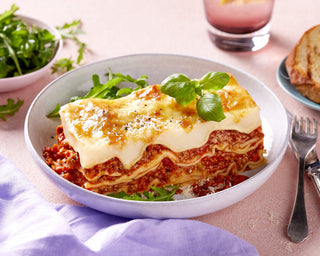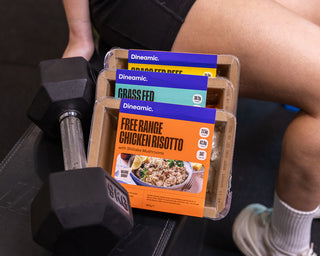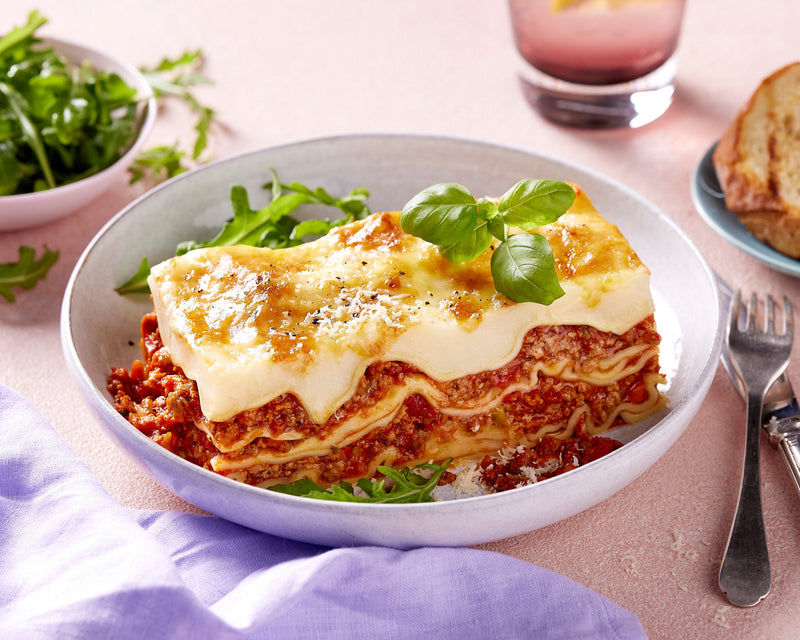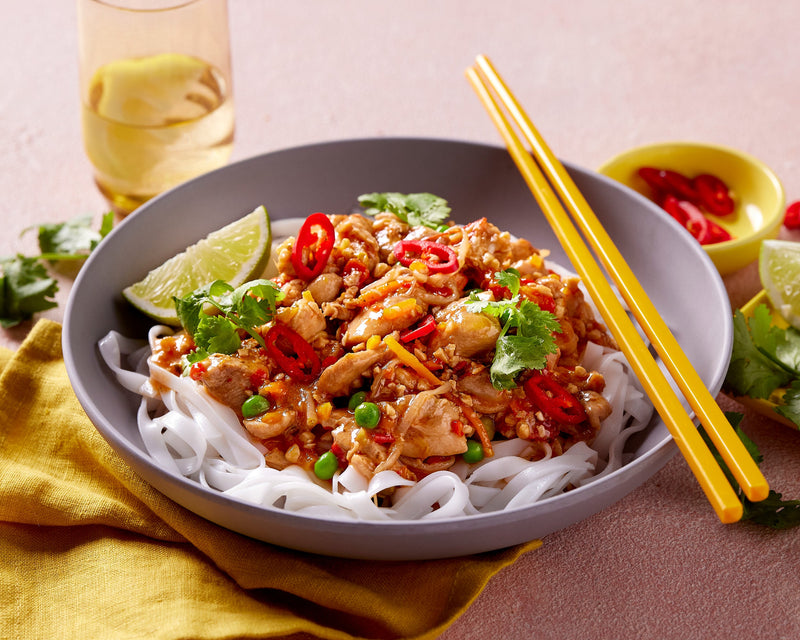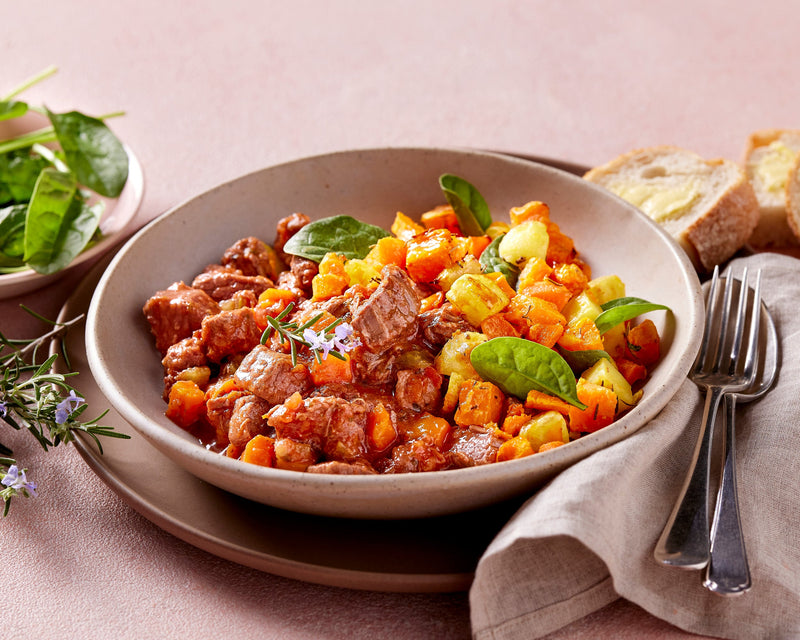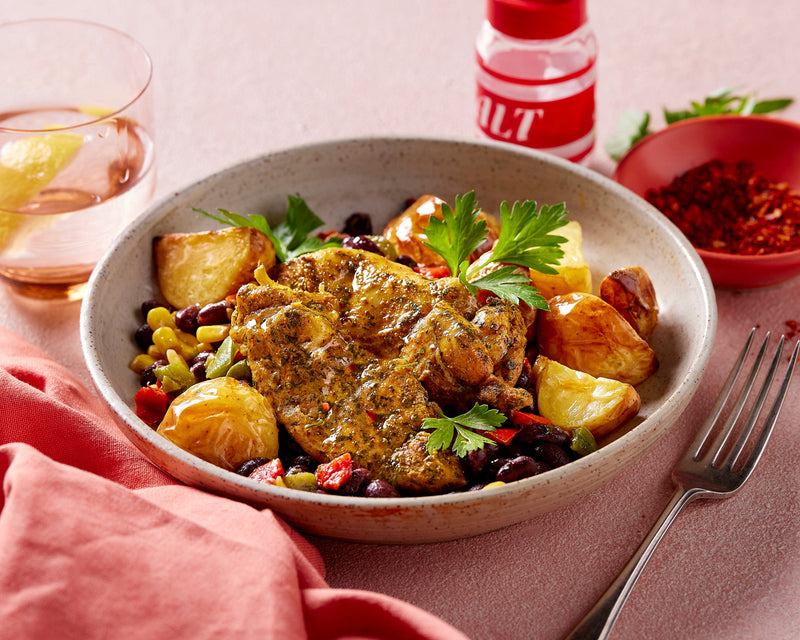
Oils. They’re versatile, the perfect heat insulator and IMO very underrated considering they turn batter into donuts and potatoes into matchsticks of crispy heaven. But just like your other everyday staples, there’s a dozen of oil types to select from. So, which is most stable? Which is better for your next cooking venture and more importantly which is better for you nutritionally? So, let’s dive into the world of cooking oils, explore the properties to keep in mind and stack them up to see which is best.
OIL PROPERTIES - THINGS TO CONSIDER
EXTRACTION PROCESS - REFINEMENT
Most oils you find in your supermarket are either extracted using solvents or cold-pressed using mechanical pressure at low temperatures. Whilst solvent-extraction gives a better yield and more uniform oil, cold-pressing techniques have advantages that include less energy use, superior quality and the ability to retain flavour, aroma and nutrients (e.g. total phenolics, antioxidants and vitamin E).
POTENTIAL HEALTH BENEFITS
Oils are energy dense and similar in kilojoules (650 – 700kJ per tablespoon), however the type of fat and ratio of fatty acids they’re made up from differ. Australian guidelines recommend limiting saturated fat to no more than 20-35% of kJ coming from fats and 10g (about 2 teaspoons) from unsaturated fats. Polyunsaturated fatty acids (PUFA) and monounsaturated fatty acids (MUFA) are considered healthy due to their role in reducing the risk of heart disease and lowering cholesterol levels. Therefore, look for oils that are lower in saturated fats and higher in MUFA and PUFA by checking the back of label for more info.
Want to learn more about fatty acids? Head here and here.
SMOKE POINT
The smoke point of an oil tells us the range of temperatures an oil can withstand heat before it begins to smoke. Once it passes this point, chemical and flavour properties can start to change potentially forming harmful by-products such as polar compounds, triacylglycerol dimers and polymers. Factors that affect an oils smoke point will also include the level of refinement, the variety of seed used, the percentage of certain fats in the oil and the number of times the oils have been used before and how long it’s been heated for.
Although once used as an indicator of how well an oil would perform and therefore how ‘stable’ it is, critics are now saying that the use of smoke point parameters are not a good indicator of how stable an oil can be but instead to opt for oxidative stability and the level of free fatty acid content within an oil (more on this to follow). In all seriousness though, unless you’re deep-frying using a commercial burner, deep-frying at home is less likely to reach temperatures beyond the smoke point of oils considered ‘low’ anyway.
OXIDATIVE STABILITY
How an oil performs against the power of oxidation depends on the degree of unsaturation of its fat content and the antioxidant content. Extra Virgin Olive Oil although has a lower smoke point compared to other types is profoundly stable against high temperatures due to its antioxidant., fatty acid and polyphenol composition that act as a barrier to oxidative degradation. Exposure to light can also induce oxidation on an oil so store oils in dark bottles hidden away from sunlight. Look for something that is not too high in PUFA if you’re thinking of deep-frying.
FLAVOUR PROFILE
Depending on what the recipe calls for different types of oils serve different purposes. Flavour wise though, most neutral refined oils are great for deep-frying or sautéing while those with a strong aromatic nutty profile like sesame oil are great as a finishing oil. Think nutty oils with Asian, Mediterranean and Middle Eastern cuisines.
OIL TYPES
 Extra virgin olive oil (EVOO), the liquid gold or caviar of the oils is a great source of MUFA and a staple of the Mediterranean Diet that we at Dineamic love. It offers health benefits that protect against heart disease and inflammation due to its polyphenol and beta-carotene content. Due to its higher antioxidant content however, they also tend to have a lower smoke point so are preferred for drizzling rather than sizzling. However high quality EVOOs that have a lower level of free fatty acid (or free ‘oleic acid’) tend to have a higher smoke point, so it may come down to the brand. Interestingly, most commercial oils are usually a blend of oils from different countries however those that are on the pricier side of things are usually from a farm often made with specific varieties of olives. Unfortunately, the olive oil industry isn’t free from scandalous adulteration and counterfeiting claims. Few years back, 90 farms in Europe were exposed for passing off sunflower and soybean oil with added chlorophyll and beta-carotene as Italian olive oils. Talk about controversy.
Extra virgin olive oil (EVOO), the liquid gold or caviar of the oils is a great source of MUFA and a staple of the Mediterranean Diet that we at Dineamic love. It offers health benefits that protect against heart disease and inflammation due to its polyphenol and beta-carotene content. Due to its higher antioxidant content however, they also tend to have a lower smoke point so are preferred for drizzling rather than sizzling. However high quality EVOOs that have a lower level of free fatty acid (or free ‘oleic acid’) tend to have a higher smoke point, so it may come down to the brand. Interestingly, most commercial oils are usually a blend of oils from different countries however those that are on the pricier side of things are usually from a farm often made with specific varieties of olives. Unfortunately, the olive oil industry isn’t free from scandalous adulteration and counterfeiting claims. Few years back, 90 farms in Europe were exposed for passing off sunflower and soybean oil with added chlorophyll and beta-carotene as Italian olive oils. Talk about controversy.

 One of the most inexpensive oil types available, canola oil has a long shelf-life, high smoke point, neutral taste and so is favoured in most commercial kitchens. It also has lower levels of saturated fatty acids and higher levels of MUFA assisting with reducing the risk of coronary heart disease. It’s higher smoke point and lower PUFA content makes it more stable if you’re deep-frying.
One of the most inexpensive oil types available, canola oil has a long shelf-life, high smoke point, neutral taste and so is favoured in most commercial kitchens. It also has lower levels of saturated fatty acids and higher levels of MUFA assisting with reducing the risk of coronary heart disease. It’s higher smoke point and lower PUFA content makes it more stable if you’re deep-frying.
 Once dubbed a superfood, coconut oil was said to control sugar cravings and maintain weight stability, although most research was limited and of poor quality. While it does contain some phenolic compounds, it contains more saturated fat than butter and correlates with increased LDL cholesterol. It’s solid state also makes it much easier to overdo the amount plus it’s on the expensive side.
Once dubbed a superfood, coconut oil was said to control sugar cravings and maintain weight stability, although most research was limited and of poor quality. While it does contain some phenolic compounds, it contains more saturated fat than butter and correlates with increased LDL cholesterol. It’s solid state also makes it much easier to overdo the amount plus it’s on the expensive side.
Tip: Please don’t eat spoonsful of it. Just don’t.

Neutral in taste and plentiful in omega-6 and omega-9. It is a by-product of winemaking and contains vitamin E and polyphenols (antioxidant) that has been shown to display anti-inflammatory, cardioprotective properties in in-vitro studies. However, the actual content of polyphenols tends to be low and not much research exists looking at the link between grapeseed oil and human health. This one is also hella expensive so perhaps save it for salads or even your hair and skin.

Its neutral in taste and becoming increasingly popular. Commonly used in commercial kitchens for deep frying it contains almost a 50:50 ratio of MUFA to PUFA. It also contains a plant sterol that reduces the absorption of cholesterol in the body and is virtually free from trans fats which are sometimes found in other oils such as grapeseed and canola. Downside to this though is that it is highest in saturated fats and contains very little omega-3.

Oil sprays though technically not a ‘type of oil’ is commonly seen on the shelf. They use butane, propane or a nitrogen propellant to turn oil into a fine mist making it a healthy alternative if the aim is to use less. For those with soy allergies though, be wary as soy lecithin is often used as an emulsifying agent.
CONCLUSION
Determining which oil is best can be tricky as it all depends on what you’re intending to use it for. In a nutshell, for deep-frying opt for canola or rice bran, as a finisher, use EVOO or grapeseed and if you enjoy the taste try coconut oil. All oils are energy dense though, so be mindful not to overdo it.
Let us know in the comments below what your preferred cooking oil is and why!
Data based on AUSNUT 2011-13 Food Nutrient Database
*SFA: Saturated Fatty Acid, MUFA: Monounsaturated Fatty Acid, PUFA: Polyunsaturated Fatty Acid.


